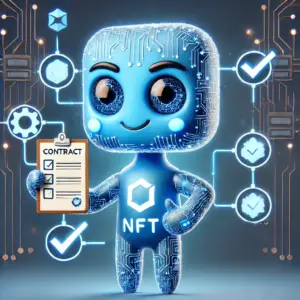Introduction to NFTs and Their Significance
Non-fungible tokens (NFTs) have revolutionized the digital world, transforming the way we interact with art, collectibles, and even real estate. These unique digital assets represent ownership over a particular item and are stored on a blockchain, a secure and transparent digital ledger. NFTs have emerged as a hot investment opportunity, attracting both individuals and institutions eager to tap into the potential of this rapidly evolving space.
If you’re considering building an NFT portfolio, you’ve made a wise decision. By carefully curating a collection of valuable NFTs, you can potentially generate significant returns while also participating in the exciting development of this emerging technology. However, before diving into the world of NFTs, it’s essential to understand the fundamentals and develop a sound strategy for building a successful portfolio.
Step 1: Educate Yourself and Understand the NFT Landscape
Before embarking on your NFT investment journey, it’s crucial to gain a comprehensive understanding of the technology and the market dynamics. This includes delving into the underlying principles of blockchain technology, the different types of NFTs, the various NFT marketplaces, and the current trends and developments within the NFT space.
Step 2: Define Your Investment Goals and Risk Tolerance
Clearly defining your investment goals and risk tolerance is paramount to building a successful NFT portfolio. Are you aiming for short-term gains or long-term appreciation? How comfortable are you with potential price fluctuations and the inherent risks of investing in a relatively new and volatile market?
Step 3: Choose a Wallet for Safe and Secure NFT Storage
A secure NFT wallet is essential for storing your valuable digital assets. Popular options include MetaMask, Coinbase Wallet, and Trust Wallet. These wallets allow you to connect to various NFT marketplaces and trade your assets safely.
Step 4: Acquire Cryptocurrency for NFT Transactions
Most NFT transactions are conducted using cryptocurrencies, such as Ethereum or Polygon. You’ll need to purchase these cryptocurrencies from a reputable exchange platform like Coinbase or Binance.
Step 5: Research and Identify Promising NFT Projects
With a vast array of NFT projects available, it’s crucial to conduct thorough research and identify projects with strong fundamentals, promising communities, and experienced teams. Consider factors such as the project’s purpose, utility, roadmap, and tokenomics.
Step 6: Diversify Your NFT Portfolio
Diversification is a key principle in any investment portfolio, and it’s especially important in the dynamic NFT space. Spread your investment across different NFT categories, such as art, collectibles, gaming, and utility tokens, to mitigate risks.
Step 7: Track Your NFT Portfolio and Monitor Performance
Regularly monitor your NFT portfolio to track its performance and identify any potential issues. Utilize NFT tracking tools and analytics platforms to gain insights into market trends and make informed investment decisions.
Step 8: Stay Informed and Adapt to Market Changes
The NFT market is constantly evolving, so it’s crucial to stay up-to-date with the latest news, trends, and developments. Actively engage with the NFT community, follow reputable industry experts, and participate in discussions to gain valuable insights.
Additional Considerations for NFT Portfolio Management
- Consider the environmental impact of NFTs: The energy consumption associated with some NFT projects has raised environmental concerns. Research and invest in projects that prioritize sustainable practices and minimize carbon footprint.
- Protect your digital assets with strong passwords and security measures: NFTs are valuable assets, so it’s essential to safeguard them with strong passwords, two-factor authentication, and secure storage practices.
- Beware of scams and fraudulent activities: The NFT space is not immune to scams and rug pulls. Do your due diligence, thoroughly research projects before investing, and avoid clicking on suspicious links or interacting with unfamiliar parties.
Conclusion
Building a successful NFT portfolio requires a combination of research, informed decision-making, and careful risk management. By following the guidelines outlined in this comprehensive guide and staying vigilant in the ever-changing NFT landscape, you can position yourself for potential gains and contribute to the growth of this innovative technology.






